Plant Index
Chamaecyparis thyoides
Chamaecyparis thyoides (L.) Britton, Sterns & Poggenb.
atlantic white cedar, juniper
Synonym(s): Chamaecyparis henryae, Chamaecyparis thyoides var. henryae, Cupressus thyoides, Cupressus thyoides ssp. henryaeCultivar(s): Emily, Webb #1
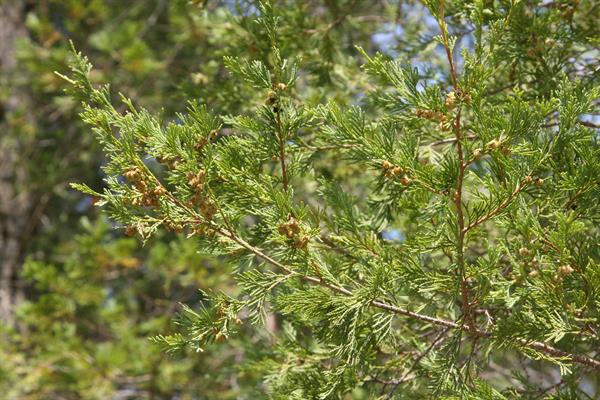
Image ID: 13561
Image by: Sorrie, Bruce A.
Image Collection: NCBG Digital Library
PLANT INDEX
ID_PLANT: CHTH2SCIENTIFIC NAME: Chamaecyparis thyoides
Include in WOTAS: 0
Publish to Web: 1
Last Modified: 2019-03-29
CULTIVAR INDEX
| Cult_id | Cultivar_name | Action |
| 203 | Emily | View |
| 291 | Webb #1 | View |
GENUS INDEX
GENUS CODE: CHAMA4GENUS SCIENTIFIC: Chamaecyparis
GENUS AUTHORITY: Spach
GENUS COMMON: Cedar
GENUS SUMMARY: A genus of about 6 species, trees, of warm temperate to cool temperate North America and Asia. The genus consists of 5 species – ours, 1 in w. North America, and 3 in Japan & Taiwan.
GENUS IDENTIFICATION:
GENUS REFERENCES: Mylecraine et al. (2005, 2006, 2009)=X; Michener in FNA (1993b); Farjon (2005)=Y; Farjon (1998)=Z; Page in Kramer & Green (1990).
FAMILY INDEX
FAMILY CODE: CUPRESFAMILY SCIENTIFIC: Cupressaceae
FAMILY AUTHORITY: Bartlett 1830
FAMILY COMMON: Cypress Family
FAMILY SUMMARY: A family of about 29 genera and about 130 species. Recent studies indicate that the separation of the Taxodiaceae from the Cupressaceae is not warranted, and they are here combined (Gadek et al. 2000; Brunsfeld et al. 1994). The subfamilial classification used here follows Gadek et al. (2000).
FAMILY REFERENCE: Farjon (2005); Hart & Price (1990); Hardin (1971b); Watson & Eckenwalder in FNA (1993b); Page in Kramer & Green (1990).
NCBG DESCRIPTIVES
INTRO:STEMS:
LEAVES:
INFLORESCENCE:
FLOWERS:
FRUITS:
COMMENTS:
HEIGHT: up to 50 ft.
DURATION: Perennial
HABIT: Tree
LEAF ARRANGEMENT:
LEAF COMPLEXITY: Simple
LEAF RETENTION: Evergreen
FLORAL CHARACTERISTICS
SYMMETRY:
BLOOM TIME: Mar-Apr
| Jan | Feb | Mar | Apr | May | Jun | Jul | Aug | Sep | Oct | Nov | Dec |
| x | x | x |
BLOOM COLOR:
| White | Red | Pink | Orange | Yellow | Green | Blue | Lavender | Purple | Violet | Brown | Not Applicable |
| x |
FRUITING PERIOD: Oct-Nov.
DISTRIBUTION
HABITAT TYPE: Bogs/pocosins
NATIVE RANGE: eastern United States
HORTICULTURAL
Plant Sale Text: Native to wet areas from Maine to Florida, this evergreen tree grows into a slender columnar form. Its needlelike green foliage is often tinged with bronze in winter. It provides excellent screening if grown in full sun. Atlantic White-cedar is easy to grow and adaptable to garden situations. This southeastern native species has no serious disease or insect problems. Its wood is very strong, lightweight and rot-resistant, thus it has often been used for fence posts, boat building and similar uses. The NCBG Education Center actually is sided in Atlantic White-cedar!
Bloom Table Text:
NCBG Location:
Cultural Notes:
SOIL MOISTURE: Average, Moist/Wet
LIGHT EXPOSURE: Sun, Part Shade, Shade
MINIMUM HARDINESS ZONE: 4
MAXIMUM HARDINESS ZONE: 9
GERMINATION CODE:
WILDLIFE VALUE:
DEER RESISTANCE:
GRIM COLLECTIONS
| Coll_id | Project | Collection date | Collector | Action |
| 625 | SOS | 2015-11-11 | Faucette | View |
| 760 | SOS | 2016-09-29 | Faucette | View |
| 1459 | HORT | View |
GRIM ACCESSIONS
| acc_id | acc_num | acc_dt | coll_id | Action |
| 1908 | 1986-1693 | View | ||
| 2165 | 1986-1973 | View | ||
| 2503 | 1986-2362 | View | ||
| 7183 | 1999-0144 | 1999-11-08 | View | |
| 8103 | 2004-0111 | 1899-11-30 | 0 | View |
| 9146 | 2007-0168 | 2007-07-17 | 1459 | View |
| 9694 | 2024-0001 | View |
GRIM PLANTINGS
| plt_num | acc_id | loc_num | pers_num | inst_dt | Action |
| 3019 | 1908 | 6 | NCBG staff | 1967-12-31 | View |
| 3020 | 1908 | 134 | NCBG staff | 1986-01-01 | View |
| 3021 | 1908 | 71 | NCBG staff | 1967-12-31 | View |
| 3022 | 1908 | 62 | NCBG staff | 1986-12-22 | View |
| 3733 | 2165 | 56 | NCBG staff | 1986-12-23 | View |
| 3734 | 2165 | 59 | NCBG staff | 0000-00-00 | View |
| 3735 | 2165 | 53 | NCBG staff | 0000-00-00 | View |
| 4261 | 2503 | 140 | NCBG staff | 1967-12-31 | View |
| 10129 | 7183 | 158 | NCBG staff | 1999-11-01 | View |
| 10130 | 7183 | 52 | NCBG staff | 1967-12-31 | View |
| 12106 | 9146 | 59 | NCBG staff | 0000-00-00 | View |
| 14049 | 8103 | 32 | Wait | 0000-00-00 | View |
| 14261 | 9694 | 62 | Liloia | 0000-00-00 | View |
USDA PLANTS DATABASE
USDA Symbol: CHTH2USDA Common Name: Atlantic White Cedar
Native Status: L48 (N)
Distribution: USA (AL, CT, DE, FL, GA, MA, MD, ME, MS, NC, NH, NJ, NY, PA, RI, SC, VA)
Duration: Perennial
Growth Habit: Tree
NATIONAL WETLAND INDICATOR STATUS
| Region: | AGCP | AK | AW | CB | EMP | GP | HI | MW | NCNE | WMVE |
| Status: | OBL | OBL | OBL |
WEAKLEY FLORA
SCIENTIFIC NAME: Chamaecyparis thyoides var. thyoidesCOMMON NAME: Atlantic White Cedar, Juniper
SYNONYMY: [= X, Y, Z; < C. thyoides - C, F, FNA, G, K, Pa, RAB, S, Va, WH3]
PHENOLOGY: Mar-Apr; Oct-Nov.
HABITAT: Peat dome and streamhead pocosins, blackwater stream swamps, hillside seepages, in highly acidic, peaty or sandy soils.
COMMENTS: S. ME south to n. FL and west to s. MS. From NJ south it is strictly a tree of the Coastal Plain; northward it is often found in kettle-hole bogs. In SC and GA, C. thyoides is absent in the outer Coastal Plain, occurring primarily in the fall-line Sandhills. A prized timber tree, now much reduced in abundance, formerly used for cabinetry, boat-building, shingles, and other uses. The wood is valuable enough (and resistant enough to rot) to have been mined from bogs in NJ. NC has some of the largest remaining stands of Atlantic White Cedar, in areas of very difficult access, such as the interiors of major peat-domes and large peat-filled Carolina bays. The species is generally known as juniper in our area.
RANGE MAP: Chamaecyparis thyoides var. thyoides.png

Key to Map Symbols
ABOUT FAMILY (Weakley Flora)
Cupressaceae Bartlett 1830 (Cypress Family)
SUMMARY: A family of about 29 genera and about 130 species. Recent studies indicate that the separation of the Taxodiaceae from the Cupressaceae is not warranted, and they are here combined (Gadek et al. 2000; Brunsfeld et al. 1994). The subfamilial classification used here follows Gadek et al. (2000).
REFERENCE: Farjon (2005); Hart & Price (1990); Hardin (1971b); Watson & Eckenwalder in FNA (1993b); Page in Kramer & Green (1990).
ABOUT GENUS (Weakley Flora)
Chamaecyparis Spach (Cedar)
SUMMARY: A genus of about 6 species, trees, of warm temperate to cool temperate North America and Asia. The genus consists of 5 species – ours, 1 in w. North America, and 3 in Japan & Taiwan.
REFERENCE: Mylecraine et al. (2005, 2006, 2009)=X; Michener in FNA (1993b); Farjon (2005)=Y; Farjon (1998)=Z; Page in Kramer & Green (1990).
HERBARIUM RESOURCES
SERNEC: Find Chamaecyparis thyoides in Southeast Regional Network of Experts and Collections (if available)UNC SERNEC: Find Chamaecyparis thyoides in University of North Carolina Chapel Hill Herbarium - Southeast Regional Network of Experts and Collections (if available)
WEB RESOURCES
USDA: Find Chamaecyparis thyoides in USDA PlantsNPIN: Find Chamaecyparis thyoides in NPIN Database
FNA: Find Chamaecyparis thyoides in the Flora of North America (if available)
Google: Search Google for Chamaecyparis thyoides
IMAGE USE RECORDS
ID IMAGE: 13561 - Primary Image FloraQuest Plant Detail Page (Landscape Preferred)ID IMAGE1: 13561 - Primary Image WOTAS
ID IMAGE2: 13563 - Secondary Image WOTAS
ID IMAGE3: 13562 - Primary Image Plant Sale Sign (Landscape Only)
ID IMAGE4: 0 - Primary Image New Plant Sale Label (Portrait Only)
From the Image Gallery
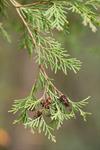 Image ID: 36348 |
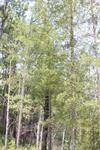 Image ID: 13563 |
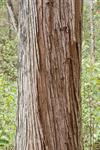 Image ID: 36346 |
 Image ID: 19946 |
 Image ID: 19947 |
 Image ID: 19948 |
 Image ID: 19949 |
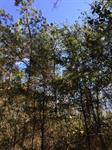 Image ID: 34507 |
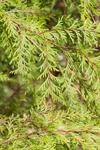 Image ID: 36344 |
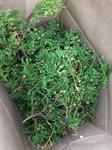 Image ID: 34914 |
 Image ID: 34913 |
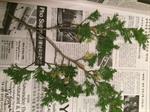 Image ID: 34508 |
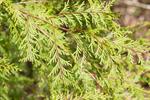 Image ID: 36345 |
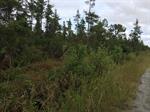 Image ID: 34912 |
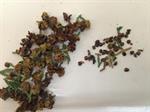 Image ID: 34509 |
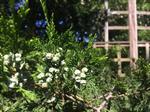 Image ID: 19652 |
 Image ID: 13562 |
 Image ID: 10782 |
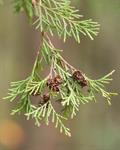 Image ID: 36347 |